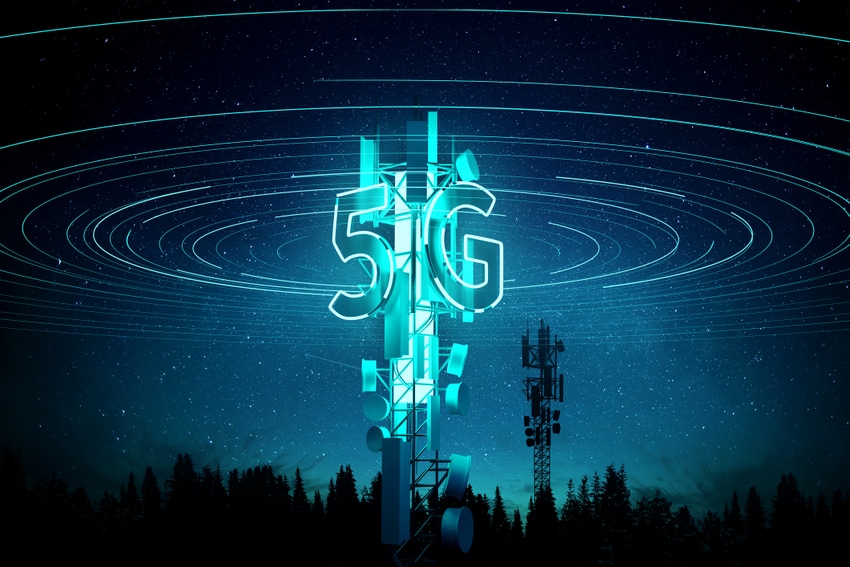1.5 billion 5G subscriptions predicted by the end of the year
According to a report by Swedish kit vendor Ericsson, 5G mobile subscriptions are growing in every region in the world, but the extent to which this is translating into revenue growth remains unclear.
June 21, 2023

According to a report by Swedish kit vendor Ericsson, 5G mobile subscriptions are growing in every region in the world, but the extent to which this is translating into revenue growth remains unclear.
The June 2023 edition of the Ericsson Mobility Report claims that 5G subscriptions are on the up in every region worldwide, as is global mobile network data traffic with the monthly global average usage per smartphone expected to exceed 20 GB by the end of the year.
5G subscriptions are forecasted to reach 4.6 billion globally by the end of 2028, which would make up more than 50% of all mobile subscriptions. 4G subs are also increasing, growing by 59 million during Q1 2023 to 5.2 billion, but they are projected to start declining from this year to around 3.8 billion by the end of 2028 as customer jump over to 5G contracts.
The Indian market is held up as the fastest growing 5G region globally – we’re told 5G subscriptions there reached around 10 million by end of 2022 and are estimated to account for 57% of mobile subscriptions in the country by the end of 2028.
5G subscriptions uptake in North America has been stronger than expected in previous forecasts as well, and at the end of 2022 it clocked 41% penetration, which ranks the highest at the moment regionally.

Around 240 CSPs (operators) have launched commercial 5G services and about 35 have deployed or launched 5G Standalone. The most common 5G services for consumers are listed as enhanced mobile broadband (eMBB), Fixed Wireless Access (FWA), gaming and AR/VR-based services. Over 100 CSPs are now offering FWA services over 5G, which is estimated to account for almost 80% of all FWA connections by 2028.
“The global adoption of 5G technology has surpassed one billion subscriptions, bringing positive revenue growth for communications service providers in leading 5G markets,” said Fredrik Jejdling, EVP and Head of Networks at Ericsson. “We see a strong link between the increase in 5G subscriptions and service revenue. Over the past two years, the introduction of 5G services in the top twenty markets has resulted in a seven percent revenue boost. This trend shows the growing value of 5G, benefiting users and service providers alike.”
Speaking of revenue, it’s a bit of a mixed picture despite the claim of a 7% 5G bump. The report claims that “the launch of 5G services has enabled service providers to proactively drive a shift to higher mobile tariffs, while adding value for consumers.”
It goes on to say: “For service providers, the additional value provided to consumers and enterprises translates into opportunities for upsell and revenue increase. The revenue trend in Figure 2 indicates this value capture has already begun. As 5G networks and ecosystems mature, with more services and applications being developed and offered, even more value for customers will be unlocked.”
Here are Ericsson’s workings along with its methodology:

A celebration of revenue growth associated with 5G seems to run counter to the anecdotal accounts of many operators, few of whom can be said to be experiencing a boom right now. Indeed European operators are often lobbying to get big tech to stump up some cash in order that it remain profitable for them to carry on rolling out infrastructure. A 7% increase in revenues may well be there at least according to that specific metric, but thaty has to be balanced with the amount of money operators have spent on 5G, which is a lot.
Furthermore, the report goes on to say that ‘on a country level, there is often very little or no differentiation between the prices and packages for smartphones and subscriptions offered by different service providers,’ and it claims only 22% of service providers that offer 5G are differentiating the price compared to their 4G offerings.
This would appear to saying that most operators are in fact not necessarily making much more money from 5G, on the consumer side at least, which tallies with other reports generally. Perhaps then the rosy picture of growth opportunities lays more on the B2B or private network side – which may be the case, but as Telecoms.com reported last week this area remains a fairly nascent market and still has a long way to go.
All in all, while growth in 5G growth certainly seems to be there, which can’t be bad, it may be a tad early to be getting popping the champagne on the monetisation front.
Get the latest news straight to your inbox. Register for the Telecoms.com newsletter here.
About the Author(s)
You May Also Like











_1.jpg?width=300&auto=webp&quality=80&disable=upscale)


.png?width=800&auto=webp&quality=80&disable=upscale)